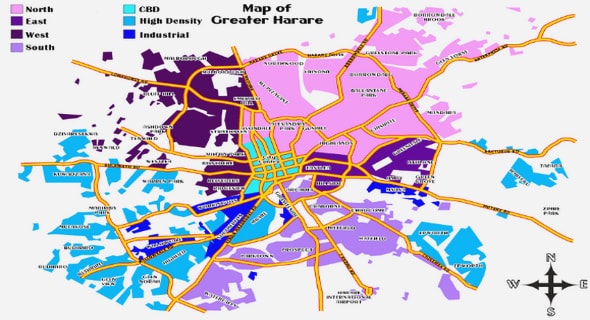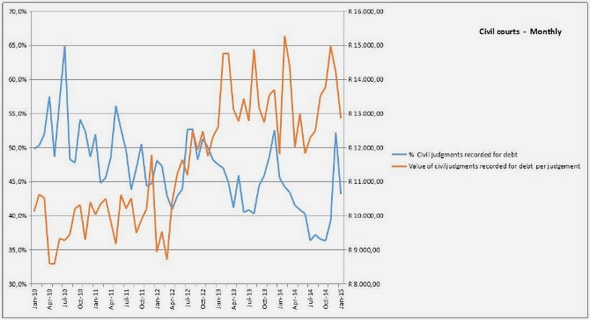Get Complete Project Material File(s) Now! »
Sex steroid hormones and the central nervous system
Steroid hormones are vital substances that have a wide spectrum of impact, serving as fundamental regulators of widely physiological functions within human body, including water regulation, metabolism, general immune functions, sexual differentiation, events during pregnancy, and brain function. Steroid hormones are formally defined by their chemical structure, having three cyclohexane rings and one cyclopentane ring that vary by the functional groups attached to the ring structures and by the oxidation state. There are five classes of steroid hormones: androgens, estrogens, progestogens, glucocorticoids, and mineralocorticoids, each with distinctive receptors. Endogenous steroid hormones are primarily synthesized from cholesterol primarily by the adrenal glands or gonads, and secreted into the blood stream in a highly regulated manner. Synthetically derived steroids encompass a wide spectrum of therapeutics capable of interacting with endogenous receptors, although there are many nonsteroids also capable of interaction with steroid receptors. All steroids are relatively small and lipophilic, allowing entry into cells via passive diffusion. Thus, unconjugated steroids within the systemic circulation can readily cross the BBB and impact CNS function. (Witt and Sandoval, 2014a).
In this work we will focus on two of sex steroid hormones, androgen hormones and estrogen hormones and their effects on the BBB function and integrity.
The major sex hormones, estrogen and testosterone, can have both organizational and activational effects (Arnold, 2009). Organizational effects of hormones are permanent and independent of acute circulating hormone levels and, therefore, cannot be reversed by gonadectomy. For example, the formation of the sex-specific genitalia occurs early in life and remains stable despite changing hormonal concentrations during life span. In males, organizational effects occur prenatally or in early postnatal life when peaks of testosterone occur (Cohen-Bendahan et al., 2005). Testosterone metabolized by aromatase to 17β-estradiol and organizes the brain to become male as reflected by the development of cerebral sexually dimorphic nuclei and male specific behavior. Males exposed prenatally to aromatase inhibitors have been shown to exhibit female specific sexual behavioral patterns (lordosis) (Clemens and Gladue, 1978). In females, the organization of the brain occurs owing to the lack of local estrogen produced by the ovaries, binding to α-fetoprotein and does not reaching the brain (Bakker et al., 2006).
Activational effects of hormones are dependent on the continuous production of gonadal hormones and are therefore reversible by gonadectomy (Arnold, 2009). The interaction between organizational and later activational effects may also occur. The brain is programmed by organizational effects of hormones very early in life, but the activational effects of hormones can subsequent activate these traits. However, activational effects are often, but not always, constrained by earlier organizational effects. For example, the male brain becomes organized by estrogen, but the spine density in the CA1 regions of the hippocampus does not respond to the estrogen administration in adulthood (Woolley and McEwen, 1993). Otherwise, hippocampal spine synapses growth in castrated adult male rats and can be induced by androgens (Leranth et al., 2003). In contrast, the female brain, which gets organized in the absence of estrogen, has increased apical spine density in the CA1 region of hippocampus with the administration of estrogen (Woolley and McEwen, 1993).
Androgens and androgen receptor
Androgens
Classically, androgens have been described as endogenous “male” hormones known for their steroidal actions in reproductive tissues and skeletal muscles. However, androgens also mediate physiological responses in a variety of tissues including brain, bone, cardiac and skeletal muscles, and the blood vessel wall in both male and females (Gonzales, 2013). Once Leydig cells are developed in the fetal testis, they start synthesizing testosterone as early as embryonic day-13 (E13) in mice. Testosterone is a steroid hormone and its biosynthesis takes place in the mitochondria of the Leydig cells through enzymatic conversion of cholesterol in a series of steps (Fig. 11). Cholesterol is transported through the inner mitochondrial membrane by the steroidogenic acute regulatory protein StAR, where it is cleaved by the cytochrome P450 side chain cleavage enzyme (P450scc) and further processed by 3β-hydroxysteroid dehydrogenase (3β-HSD), 17α-hydroxylase/c17, 20-lyase (P450c17), and 17β- hydroxysteroid dehydrogenase (17β-HSD). In certain tissues, testosterone can be further reduced into the more potent 5α dihydrotestosterone (DHT) by 5α-reductase type 1 and type 2 enzymes (Shimazaki et al., 1965), or aromatized into estradiol by P450 aromatase (Arzu, 2003; Ryan et al., 1972; Simpson et al., 1994)
Testosterone production and secretion in newborn mice and adult animals is regulated by pituitary gonadotropins and luteinizing hormone (LH), unlike initial fetal testosterone synthesis, which appears to be independent of LH since it already occurs before LH transcripts are detected in the pituitary. Thus, testosterone dependent male fetal sexual differentiation does not require pituitary hormones (Arzu, 2003; El-Gehani et al., 1998).
The gonadal hormones evolve differently throughout life. In male, in the perinatal period there are two peaks of testosterone which play a key role in sexual differentiation of the nervous system. The end of differentiation testicular marks beginning of release of testosterone. The testosterone concentration increases from 14th embryonic (E14) day, and are responsible for sexual differentiation of genital tract. The first peak of testosterone is reached in E18-19 (Salgueiro and Reyss, 2002), followed by a second peak a few hours after birth (Corbier et al., 1992; Pang and Tang, 1984). After that, testosterone levels is decreased and remained low until puberty. Then gradually increase from the postnatal day 35-40eme in mice (Clarkson et al., 2012). This new increase is responsible for the physical characters and the outbreak of spermatogenesis. Finally, between the 50th and 60th postnatal day, testosterone concentration is stabilized and will reach at age adult about 1 ng / ml in rodents (Fig.13) (Jean-Faucher et al., 1978; O’Shaughnessy et al., 2009).
Testosterone deprivation in men contributes to the development of metabolic syndrome. Male AR knockout mice developed insulin resistance, leptin resistance, and late onset obesity primarily caused by decreased energy expenditure due to deceased locomotor activity (Fan et al., 2005; Lin et al., 2005).
Androgen receptor
Testosterone and DHT may act in different target tissues. They bind to and exert their action through the same intracellular receptor, the androgen receptor (AR) , a protein of 110KDa (Chang et al., 1988; Lubahn et al., 1988). Testosterone can act also indirectly via stimulation of estrogen receptors, estrogen receptor α (ERα) and estrogen receptor β (ERβ), proteins of 66 and 54 KDa respectively, following its conversion into estradiol (Fig.14) (Raskin et al., 2009; Revankar et al., 2005).
These receptors belong to the super-family of nuclear receptors (NRs), which regulate gene expression through their function as transcription factors. The classical nuclear receptors for sex steroid hormones, including estrogens, progestogens, and androgens, are activated by their respective steroid hormones and undergo conformational changes, dimerize with other hormone receptors, and recruit coactivator/corepressor molecules. The dimers then bind to their respective hormone response elements in the promoter of target genes and function as nuclear transcription factors, to modulate transcription and expression of specific target hormone responsive genes and to relaying biological actions of their respective hormones. Such genomic activity between steroid hormones and their respective receptors typically occurs over a course of several hours to a day for the effects to be manifested, due to the time needed for transcription and translation of hormone responsive genes (Liu and Shi, 2015). While these hormones can induce non-genomic action (rapid action) which takes place by inducing several intracellular signaling kinase cascade pathways, including stimulation of adenylyl cyclase activity and cAMP-dependent protein kinase (PKA) pathway and cAMP-response element binding protein signaling cascade, mobilization of intracellular Ca2+-dependent protein kinase C (PKC) pathway, activation of extracellular signal-regulated kinase (ERK)/mitogen-activated protein kinase (MAPK) pathway, and activation of receptor tyrosine kinase and phosphatidylinositol 3-kinase (PI3K)/Akt signaling pathway (Liu and Shi, 2015; Sutter-Dub, 2002).
Androgen receptor is widely expressed in interconnected limbic regions such as the medial amygdala (MeA), the posteromedial component of the medial subdivision of the bed nucleus of the stria terminalis (BNST), and the preoptic hypothalamus (POA) (Fig.18).(Juntti et al., 2010). These regions are known to be important in regulating male behavior and hypothalamus pituitary gland (HPG) axis (Shah et al., 2004). Testosterone metabolizing enzymes are also expressed in these regions (POA, MeA, and BNST) (Lauber and Lichtensteiger, 1994; Melcangi et al., 1998; Wagner and Morrell, 1996).
The function and integrity of the AR generally depend on the adequate circulating level of androgen hormones (Kemppainen et al., 1992; Syms et al., 1985). However, several studies examining gonadectomy/androgen replacement, reveal different effects according to different sex and animal species. In adult male rat and mouse brain, AR levels are either low or undetectable 1 to 4 days after castration in the evaluated regions, and testosterone treatment restores AR in these regions (Freeman et al., 1995; Lu et al., 1998; Simon et al., 1996; Zhou et al., 1994). Castration of male mandarin vole (Microtus mandarinus) significantly reduced levels of serum testosterone and the number of AR immunoreactivity in the anterior hypothalamus, BNST, MeA and lateral septal nucleus (He et al., 2012). In male guinea pig, 4 days of castration is of no effect on neural AR immunoreactivity in both POA and medial basal hypothalamus (Choate and Resko, 1992). Two weeks of castration in male Syrian hamsters causes reduction in nuclear AR expression and gradual increase in cytoplasmic AR expression in throughout the brain, while long-term exposure to testosterone and DHT maintains nuclear AR immunoreactivity (Wood and Newman, 1999). Castration of male hamsters is of no effect on the immunoreactivity of AR in whole brain regions, except in lateral septum, where AR immunoreactivity is enhanced after castration (Clancy et al., 1994).
Concerning sex differences, studies shown that the expression of AR is sexually dimorphic, AR immunostaining is greater in male versus female in rat hypothalamic periventricular nucleus and BNST (Herbison, 1995), in all hypothalamic region in adult mice (Brock et al., 2015), and also in lateral septum, posteromedial bed nucleus of the stria terminalis, and medial preoptic nucleus in Syrian hamster (Wood and Newman, 1999). In mouse brain, immunostaining and Western blot analyses for four brain areas (BNST, posterior aspect of MPOA, and dorsal and ventral aspects of the lateral septum) that have been linked to the regulation of male-typical behavior, have been evaluated, findings how regional differences in the expression of AR, sexual dimorphism differences in the intensity of AR immunostaining in these regions is reported, that the intensity of AR immunostaining is greater in intact male vs. female rat. The loss of AR is noticed in both sexes after gonadectomy to a higher extent in males. Testosterone treatment significantly up-regulates AR expression in both male and female without sexual differences in response to testosterone (Lu et al., 1998). The same results have been obtained from two studies using BALB/c or C57BL6 mice, exhibiting strong sex differences in AR expression between male and female, whereas castration decreases AR expression in both sex and which was restored by DHT treatment (Arteaga-Silva et al., 2007; Brock et al., 2015). There is no significant difference in AR expression between male and female cynomolgus monkeys (Michael et al., 1995).
These results suggest that there is regional, sex and/or species differences in neural AR regulation.
Table of contents :
Literature review
Chapter 1: Blood-Brain Barrier and neurovascular unit
1.1 History of the Blood-Brain Barrier
1.2 Concept of the Blood-Brain Barrier and neurovascular unit
1.2.1 The blood-brain barrier
1.2.2 Concept of the Neurovascular Unit
1.3 Morphological basis of the neurovascular unit
1.3.1 Endothelial cells
1.3.2 Basement membrane
1.3.3 Pericytes
1.3.4 Astrocytes end-feet
1.3.5 Neurons
1.3.6 Microglia
1.4 The molecular composition of the tight junction
1.4.1 Occludin
1.4.2 Claudin
1.4.3 Junctional adhesion molecules
1.4.4 Cytoplasmic accessory protein (membrane-associated guanylate kinase – like protein
1.4.5 Actin
1.5 Transport across the Blood-Brain Barrier
1.5.1 Passive diffusion
1.5.2 Facilitated diffusion (carrier-mediated transport)
1.5.3 Active transport
1.5.4 Blood-brain barrier transport of macromolecules
1.6 The Blood-Brain Barrier in pathological conditions
1.6.1 Hypoxia and ischemia
1.6.2 Inflammation- associated neurological diseases
1.6.3 Parkinson disease
1.6.4 Epilepsy
1.6.5 Brain tumors
1.6.6 Diabetes
1.6.7 Other insults
Chapter 2: Sex steroid hormones and the central nervous system
2.1 Androgens and androgen receptor
2.1.1 Androgens
2.1.2 Androgen receptor
2.2 Estrogens and estrogen receptors
2.2.1 Estrogens
2.2.2 Estrogen receptors
2.2.2.1 Estrogen receptor alpha
2.2.2.2 Estrogen receptor beta
2.3 Sex steroid hormones and receptors in cerebral blood vessels
2.3.1 Functional effects of sex steroids on cerebral arteries: Vascular tone
2.3.2 Functional effects of sex steroids on cerebral arteries: inflammatory responses
2.4 Sex steroid hormones and the blood-brain barrier
2.5 Sex steroid hormones and other NVU elements, astroglia and microglia
2.5.1 Astrocytes
2.5.2 Microglia
2.5.3 Pericytes
2.6 Sex steroid hormones and mitochondrial metabolism
2.7 Sex steroid hormones and neuroprotection
Chapter 3: Age-related changes in the Blood-Brain Barrier.
Thesis project
Results
Part I: Involvement of sex steroid hormones in the integrity of the blood-brain barrier and the surrounding parenchyma in mouse
A- Gonadal testosterone and neurovascular unit in male mice
B- Gonadal estrogen hormone effect on neurovascular unit in female mouse
Part II: Involvement of sex steroid receptors on the integrity and function of the BBB in adult male mouse
A- Sex steroid hormones receptors involvement in the neurovascular unit integrity of male mouse
B- Short-term action of testosterone on the neurovascular unit in male mouse
Discussion and perspectives
Discussion
Perspectives
References


